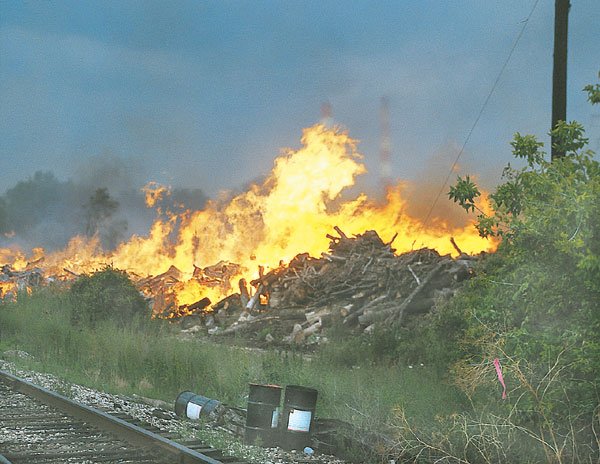FireScaping or designing landscapes to minimize losses due to
fire is an increasingly important fire safety and prevention tool.
In California we don’t have to think long ago to remember Santa
Barbara, the Oakland Hills, Murphys, San Diego and most recently
the southern California fire complex that devastated communities
over the past years.
FireScaping or designing landscapes to minimize losses due to fire is an increasingly important fire safety and prevention tool. In California we don’t have to think long ago to remember Santa Barbara, the Oakland Hills, Murphys, San Diego and most recently the southern California fire complex that devastated communities over the past years.
As more people crowd into rural, densely vegetated areas it will be important to remember that these areas need to have fire preventative measures in place before the populations build.
A little preplanning will go a long way, for instance, think through your landscape plans and make them “FireScape” plans.
Studies show that devastating fires sweep across and destroy large areas of land, homes and communities each year, in virtually every part of the country. Therefore, it’s only wise to take steps like those listed below to “FireScape” your home especially if you live in a rural area.
• Wildfire spreads uphill rapidly. If you’re purchasing land for a new home, select as flat a site as possible. If you do choose to build on a hilly site, locate the driveway on the downhill or windward side of your home so it can act as a barrier to fire.
• Clearly mark the entrance to your home and driveway avoiding narrow or winding roads that can obstruct and delay fire trucks and other emergency equipment.
• Design the yard as a firebreak, building vegetation free walls at least two feet high.
Select the least flammable plants available. Choose hardwood trees over conifers because the hardwood trees will not burn as easily.
If you are uncertain as to the best choices of plant materials, check with your local California Certified Nursery Professional at the garden center.
• Create a safety zone encircling your home with only vegetation less susceptible to fire.
Look for foundation plantings that are slow to burn. Keep fire safety in mind with all your plant selections regardless of where they are planted.
Evergreens and conifers are among the more flammable selections, but you can still include these popular mainstays in a safety conscious landscape by planting them at least 20 feet from your house and from each other.
• Remove limbs within 15 to 20 feet of the ground or the roof of your home. If your home has a chimney, you should also get rid of any branches that fall within 14 feet of the chimney.
Remove all vines from your house, fences, wall or other structures.
If you are building in or contemplating moving to a rural area, fireScaping is a necessity.
Selection of plant material that has fire retardant qualities will enhance the beauty or your home and your peace of mind.
– California Association
of Nurseries and Garden Centers














